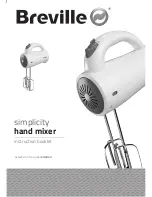
13
value is the same as the factory preset value for the
parameter.
You can reset all of the internal DSP settings to their
factory presets by using a ball-point pen or other fine-
tipped object to press the RESET switch. Doing so will
restore the programmable parameters of all effect pro-
grams to their preset values. It will also return the current
program selection to the first program, VOCAL SEND 1.
Using the Graphic Equalizer
The EMX3500’s built-in graphic equalizer (GEQ) has two
main uses: compensation for acoustic deficiencies in the
listening area, and feedback control. Like the channel
equalizers, the GEQ should not be used unless it is
absolutely necessary. The more equalization you use, the
more phase deviation you introduce into the program
signal—and the greater the chance that the phase devia-
tion can result in an unnatural, distorted sound.
There are many instances, however, in which the acoustic
characteristics of the listening area cause response
anomalies. Large areas of uncovered glass or tiled floors,
for example, are extremely effective reflectors of high-
frequency sound. Amplified sound produced in such
environments can seem painfully sharp, in which case
some reduction in the high-frequency range may be called
for.
Smaller symmetrical rooms (a square room being the
worst case) can actually have resonant frequencies within
the audible low-frequency range. In such rooms, a slight
reduction in the low frequencies can help to clarify the
sound. Please note that in almost all cases, good equaliza-
tion demands a cut in the offending frequency range rather
than a boost in ranges where response is lacking.
The GEQ can also be used—although to a limited de-
gree—to control feedback. Proper microphone placement
is the primary means of preventing feedback, but this can
be extremely difficult if you’re working in a tight stage area.
To get around this problem, try cutting response in the
frequency range where the feedback is occurring. (You
may have to experiment a bit to find this range.) This
solution will compromise the overall frequency response of
the program, but it is better than running the risk of squeal-
ing feedback in the middle of an important performance.
Connecting Speakers
The EMX3500 Powered Mixer has two 1/4" phone jack
speaker outputs per channel. The outputs for each chan-
nel are connected in parallel internally. This places some
restrictions on their use, as described below:
• If you connect speakers to only one of the output
jacks (SPEAKER 1 or SPEAKER 2), on either
channel (R or L), the total impedance of the
speaker system connected to that channel may
be no less than 4 ohms.
• If you plug speakers into both the SPEAKER 1
and SPEAKER 2 jacks of either channel (R or L),
the total load impedance of the speaker systems
connected to each output of that channel must be
no less than 8 ohms. (Note that two 8-ohm
speaker systems connected in parallel form a 4-
ohm load).
• The maximum total impedance of speakers
connected to the speaker outputs of each chan-
nel should be 16 ohms.
• The maximum speakers allowable per channel
are: one 4-ohm speaker, two 8-ohm speakers, or
four 16-ohm speakers.
Although a higher total load impedance than the recom-
mended 16 ohms will only result in a loss of power output,
a total load impedance that is too low can actually damage
the EMX3500. The EMX3500’s maximum output power is
350 watts per channel with a total load impedance of 4
ohms (one 4-ohm speaker or two 8-ohm speakers), or 200
watts per channel with a total load impedance of 8 ohms
(one 8-ohm speaker or two 16-ohm speakers).
• Never connect or disconnect speakers while the
mixer’s power supply is turned on!
• Solid phone plugs can overheat when inserted in
the rear-panel SPEAKER jacks of the EMX3500,
causing a potential fire hazard. Make a habit of
checking the metal tips of your speaker plugs,
and cleaning them if necessary, before connect-
ing them to the EMX3500.







































